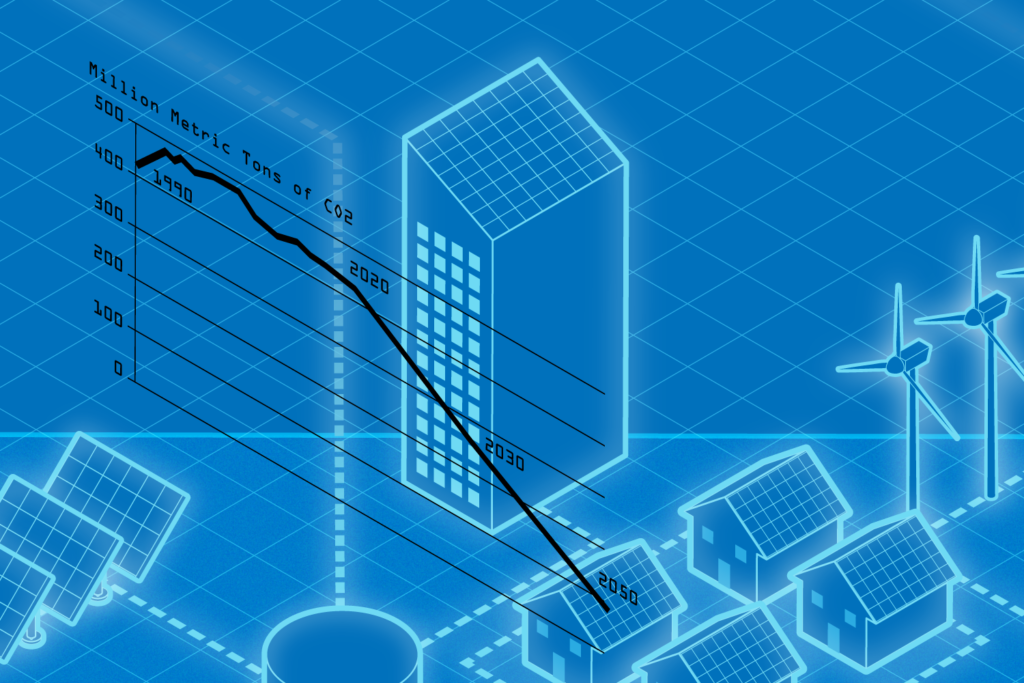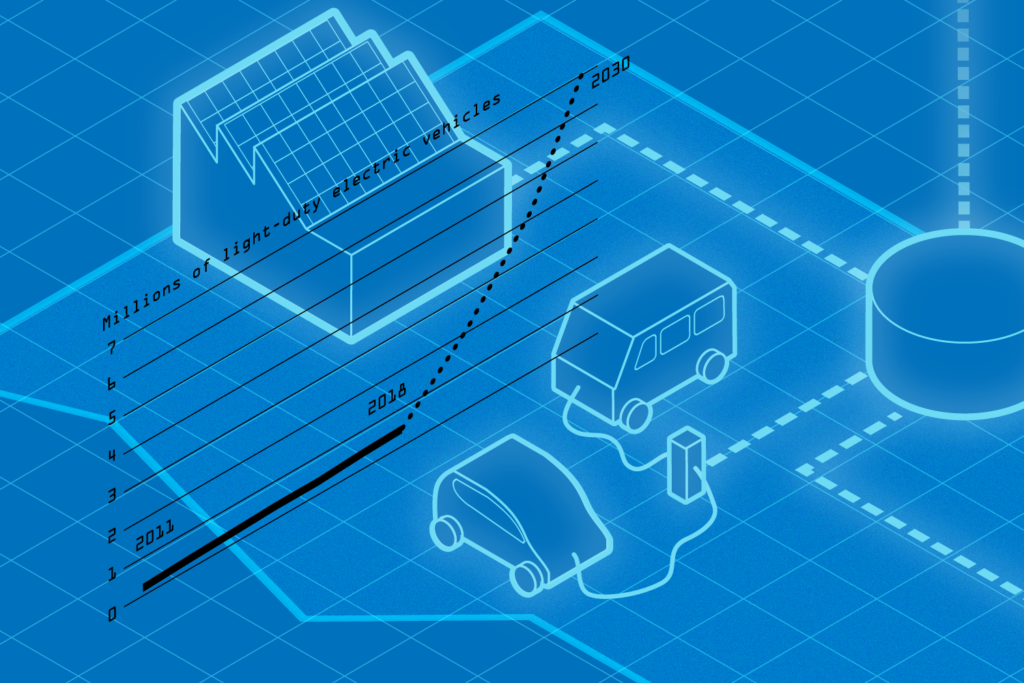The Story In Brief
When it comes to electrification, utilities need to “think ahead, think hard, and think fast because customers are demanding it,” says Pedro Pizarro, president and CEO of Edison International, the parent company of utility Southern California Edison. Pizarro speaks with EPRI Journal about his company’s Clean Power and Electrification Pathway, an integrated approach to reduce greenhouse gas emissions and air pollution through action in California’s electricity, transportation, and building sectors.
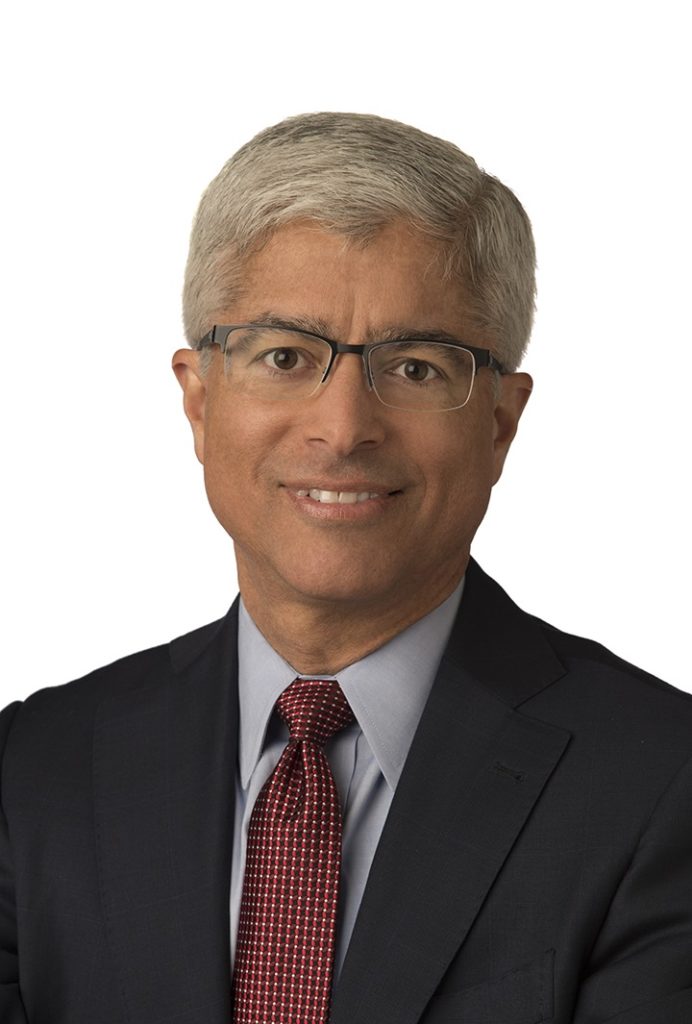
EJ: What is the Clean Power and Electrification Pathway, and why are you embarking on it?
Pizarro: California has set aggressive climate targets—a 40% reduction in greenhouse gas emissions from 1990 levels by 2030 and an 80% reduction by 2050. The state’s air quality goals include a 90% reduction in nitrogen oxide emissions from 2010 levels by 2032. It’s not that long until 2030. We believe California will have to move aggressively to get there. The Clean Power and Electrification Pathway is our view on how all sectors of the California economy—not just utilities—can achieve these targets in the most efficient, affordable manner. The pathway has become even more relevant: Last year we saw the impact of climate change in the severe wildfires across the state, which produced almost as many tons of greenhouse gas emissions as the entire power sector did that year.
To develop this blueprint, we looked at the costs of hundreds of greenhouse gas abatement measures available across the economy and assembled the information into three alternate pathways to achieve the state’s targets. One uses efficient electrification and clean energy sources, another uses more hydrogen, the third uses more renewable natural gas. We looked at the cost of each scenario for consumers across the economy and determined that the clean power and electrification pathway was the lowest.
EJ: The pathway calls for 30 gigawatts of additional wind, solar, and hydro capacity in California by 2030. What is needed to get there?
Pizarro: The pathway starts with clean power. We believe California’s electric power resource mix needs to be 80% carbon-free by 2030, and that requires 30 gigawatts of wind and solar capacity. We need clean power investments across the state—both large-scale, central-station resources and distributed resources.
California utilities need to ensure that their distribution grids are more modern and able to handle thousands of interconnected resources. Southern California Edison’s 2018 rate case, which is under review by the California Public Utilities Commission, requests $1.8 billion in capital over three years to modernize the grid. Utilities also need to expand their capabilities as distribution system operators to plan and manage the modernized plug-and-play grid. We need to design the right rates and programs to help customers transition to more distributed energy resources.
On the bulk power side, 28% of Southern California Edison’s resources are renewable under the state‘s renewable portfolio standard. We are in good shape to meet our 33% renewables by 2020 milestone and our 50% by 2030 milestone. We think that the state may have to go beyond that 50% to achieve the pathway’s target of 80% carbon-free power. We need a strong transmission system and more regional coordination among grid operators, such as the California Independent System Operator’s Energy Imbalance Market.
EJ: Do you anticipate any challenges with deploying the transmission infrastructure needed for large-scale solar and wind projects?
Pizarro: The California Independent System Operator recently updated its transmission plan, and they’re expecting lower transmission needs than they did a couple years ago as the state increasingly turns to distributed resources and energy efficiency. The greater challenges are with modernizing the distribution system—adding more remote sensors and automated controls to enable faster system response and resiliency, and doing all that in a cyber-secure way. About 5% of our 4 million residential customers have rooftop solar, and each month we’re interconnecting another 4,000 to 5,000 customer-sited solar systems. A distribution grid with that diversity and scale of connected resources demands fast modernization.
EJ: The pathway calls for 10 gigawatts of storage. What will be the role of energy storage in California’s grid in 2030? How will Southern California Edison address the high costs and uncertain business case of storage?
Pizarro: When you have a system with 80% carbon-free power, a lot of which is coming from renewable resources, storage has to play a key role in balancing out the intermittency. Today, natural-gas-fired plants are used to meet the ramps in demand when the sun sets or the wind stops blowing. Tomorrow this role will be taken by storage, particularly as there is less room for burning natural gas in a state with aggressive greenhouse gas reduction targets.
Regarding the high costs of storage, we’ve lived through this experience with renewables. In the early 2000s, California took an aggressive but measured approach when it aimed for 10% renewables. Some of those early renewable contracts cost us 12, 13, or 14 cents per kilowatt-hour. Today you see public announcements of solar contracts around the 3 cents per kilowatt-hour level. We’ve seen a dramatic cost reduction as the technology matured, in part because early targets created demand and stimulated production and scale to bring costs down. Now, the scale is driven more by economics and less by mandate.
Bloomberg New Energy Finance predicted that utility-scale battery costs will decrease from $700 per kilowatt-hour in 2016 to less than $300 per kilowatt-hour by 2030. There’s a balancing act in terms of what commitments we make today versus a year from now, three years from now, and five years from now. We need to move quickly enough now to start realizing the benefits of batteries while recognizing that the technology will improve and that contracts we sign five years from now will be more cost-effective.
We’re already seeing some cost-effective applications today. Edison Energy, Edison International’s nonutility company that develops energy solutions for large industrial and commercial customers nationwide, has customers that are deploying storage at today’s prices to shave peaks. Southern California Edison has married two natural-gas-fired peakers with 10 megawatts of battery storage. The batteries lowered the overall cost by reducing the number of plant starts needed for load following. These and other cost-effective applications stimulate the battery market, helping to bring down costs further.
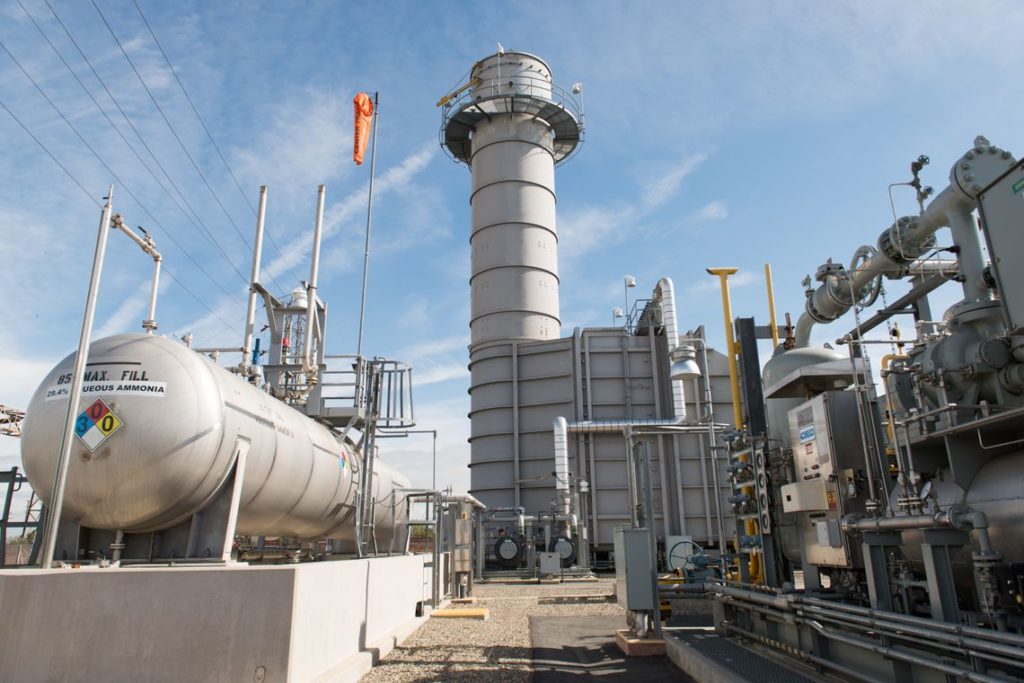
In total, we’ve procured 450 megawatts of storage. We’re deploying storage at the bulk power level, at substations, and at the distribution level on the grid side. We’re also contracting with companies that aggregate storage resources behind the meter at hundreds of customer premises, so that we can dispatch them as a single package.
EJ: Today, about 300,000 cars and light-duty trucks in California are electric or plug-in hybrids, and the pathway calls for 7 million light-duty electric vehicles by 2030. What is needed to get there?
Pizarro: Our market estimate of 7 million vehicles is what’s needed to achieve the state’s greenhouse gas and air pollution reduction targets most cost-effectively. To get there, it starts with the automakers bringing the models to market, marketing them well, and educating consumers about the growing number of affordable options and the experience of owning and charging a vehicle.
Utilities have a role to play in this education and need to help demystify electric vehicles. With Plug In America, we host ‘ride and drive’ events in our communities, where consumers have the chance to get behind the wheel of an electric vehicle to experience it firsthand. We provide information about incentives and the financial advantages of electric vehicles. At each event there are 50 to 100 test drives.
Deployment of chargers and vehicles needs to grow in lockstep. Southern California Edison has a number of initiatives to stimulate the market. Through a $22 million program, we have installed around 1,000 chargers and provide incentives for charging in multiple locations—typically work places, shopping areas, and schools. Later this year, we plan to propose an expansion of that program to significantly increase the number of chargers. We have proposed another $500 million program to deploy chargers for heavy-duty vehicles.
In areas where we expect earlier deployment of electric vehicles, we are getting the grid ready ahead of the need. In some cases, this means increasing the capacity of circuits. We recognize that charging needs may change quickly with the rise of vehicle sharing and advances in autonomous vehicles. So, for example, we may need to develop more garages that enable charging of 50 or 100 autonomous vehicles.
EJ: How will California building codes need to be updated to enable your electrification goals?
Pizarro: The challenge here is translating California’s broader policies into building codes. The state’s greenhouse gas emissions policies have changed the energy landscape, but some building codes still favor natural gas heaters over electric heaters, based on the conventional wisdom 10 or 15 years ago that natural gas heating is more efficient. Electric heat pump technology has advanced quickly and is more efficient today. The building code process in California runs on a three-year cycle under Title 24. Efforts are beginning now to develop the 2022 codes, and we expect the state to incorporate zero net energy into that cycle.
Another aspect is getting builders and equipment manufacturers to meet consumer demand and deliver products to market. For example, as the codes change, homes may need heat pump water heaters and connections for behind-the-meter battery storage.
EJ: How will California utilities and regulators need to coordinate to meet these electrification goals?
Pizarro: The pathway integrates many pieces—clean power, energy efficiency, storage, transportation, and space and water heating. This requires a lot of coordination among utilities, regulators, manufacturers, other market players, and consumers. A big part of this alignment can happen with the integrated resource plans that privately owned utilities submit to the California Public Utilities Commission. For example, we need to make sure that there’s consistency among utilities so that vendors don’t have to make different water heaters for the Southern California Edison market versus the Pacific Gas and Electric market. We also need to make sure that the resource planning by the municipal and publicly owned utilities is consistent with this pathway for California.
Policymakers have an important role to play in helping to stimulate the marketplace for new electric technologies, while utilities need to make sure that the grid can accommodate them. Rate structures must meet customers’ needs and be fair across all customer classes. For electric transportation, charging rates should align with customer driving patterns while decreasing overall system costs.
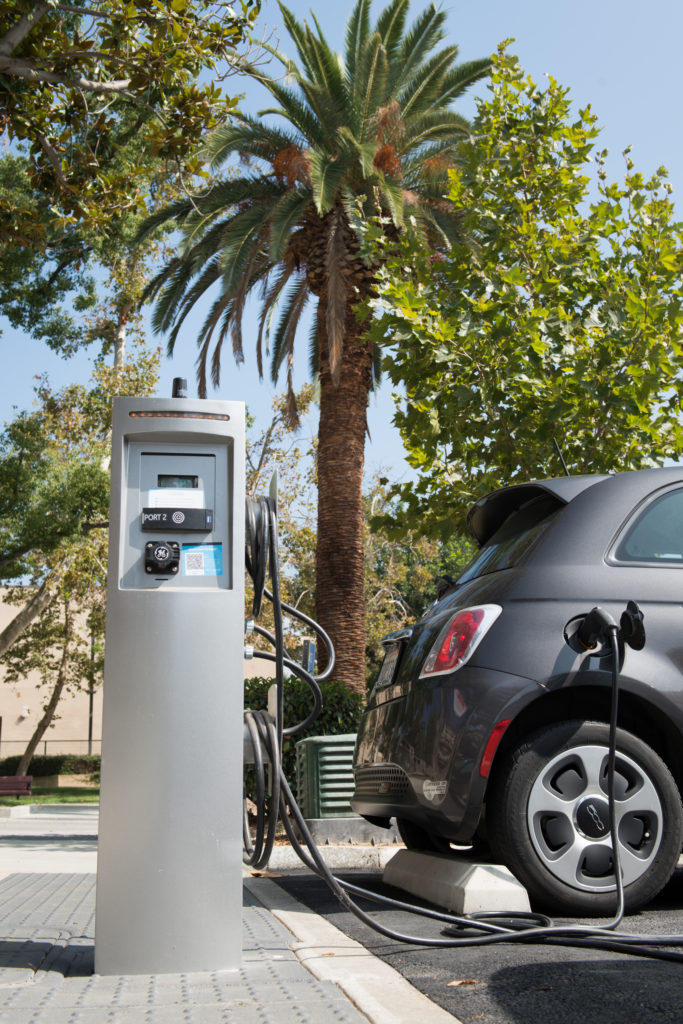
EJ: What technologies could be game changers for electrification?
Pizarro: Electric light-duty vehicle and electric bus technologies are moving quickly. Battery storage will continue to decline in cost. Although most batteries today are lithium ion, there’s a lot of research emphasis on different chemistries that could be more suitable for various grid applications.
Another big area is data analytics and machine learning. Recently we’ve made some great advances in using our five million smart meters to collect real-time and near real-time information on the state of the system. We can leverage data from smart meters, social media, and other data feeds to speed up the process of detecting outages, pinpointing their locations, and communicating this information to field workers and customers.
EJ: Why did you decide to become such an active participant in EPRI’s Efficient Electrification initiative?
Pizarro: It has become clear to us that efficient electrification is an opportunity not just for states like California with ambitious policy targets. Because the technologies are maturing so quickly—whether it’s transportation, indoor agriculture, space and water heating, or commercial processes—we saw a real opportunity across the country for utilities and, more importantly, for customers in terms of reduced costs and environmental footprint. By supporting EPRI’s initiative, we can help policymakers, customers, and utilities across the country understand the scale of the opportunity.
An important part of that is communicating the state of the R&D, and EPRI’s electrification conference in August is the first global meeting place for manufacturers, utilities, and customers to gather and learn about this.
EJ: What advice can you offer to other utilities that are setting out on a similar electrification path?
Pizarro: The headline would be, ‘Think ahead, think hard, and think fast because customers are demanding it.’ Even though other states may not have climate policies as aggressive as California’s, consumers are interested in electric technologies. Drivers increasingly want electric vehicles. Through Edison Energy, we see large companies that want to use electric technologies because of the economic and sustainability benefits. These technologies demand that utilities step up to the plate and ensure that their grids are modern and resilient.
Artwork by David Foster Graphics
Sources for data in banner illustration: California Air Resources Board (CO2 data); Bloomberg New Energy Finance (lithium ion battery data)

